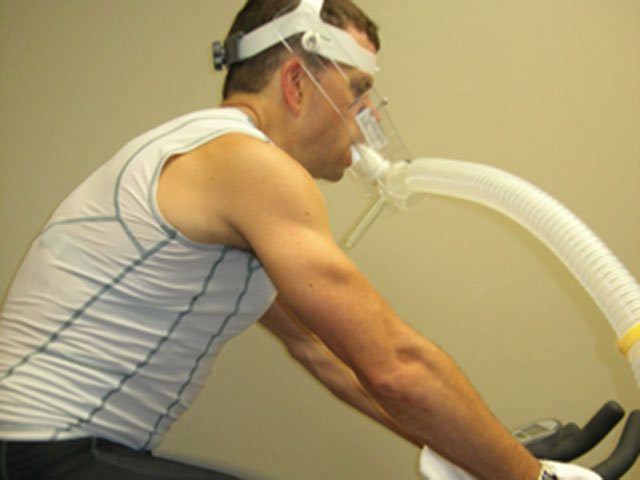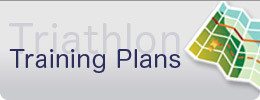So, What Is VO2 max?
I took a graduate level course in Exercise Physiology a few years ago at Eastern Michigan University where we discussed VO2 Max so I thought I would share some of what I learned and hopefully clear up some misconceptions about what VO2 max is and what VO2 max isn’t.
Remember when you learned in elementary school that plants take in carbon dioxide (CO2) and release Oxygen (O2) while humans take in O2 and produce CO2? On a cellular level, our body processes some of the O2 we breathe in through our lungs and release CO2 out through our lungs as a by product of our body’s metabolic (chemical) reactions.
As you exercise at a higher and higher intensity (effort), your body processes more and more oxygen until your body reaches a maximal amount of oxygen that it can process. Even if exercise intensity continues to go higher, your body has reached a limit in its ability to process O2. “VO2 max” is defined as the maximal rate at which an individual can process O2. VO2 max is expressed in either units of liters (L) of O2 per minute (min), which is an absolute number or milliliters (ml) of O2 per minute per kilogram (kg) of body weight, which is a relative number and what people typically use when they talk about VO2 max numbers. VO2 max relative to body weight allows us to compare the VO2 max of individuals of different sizes since larger people tend to consume more oxygen (on average) than smaller people just because they’re bigger.
A person’s O2 consumption can be measured using mask and breathing tube that connects to a metabolic cart (mask and breathing tube shown in the picture of me above). The actual VO2 max test itself is only about 10 minutes, as the metabolic cart analyzes the expired air of the client during progressively harder and harder exercise performed on a bike, treadmill, rower, stair climber, elliptical, etc. until a maximal amount of O2 usage is achieved – or as much intensity as the client can tolerate.
Please note: It is very important to consider the quality of the equipment being used to test, and regular maintenance and calibrations must be performed to ensure validity and reliability of data. The Parvo Medics equipment used by the Olympic Training Center is the gold standard for VO2 max testing and ensures reliable and repeatable tests.
Absolute vs. Relative VO2 Max
As an example of the difference between absolute and relative VO2 max, I did a bike VO2 max test a few years ago where I weighed in at a heavy (for me) 180.6 lbs. My relative VO2 max measured 64.2 ml / kg / min. Assuming nothing else changed but my weight (let’s assume it was all body fat), if I tested today at 170 lbs, my VO2 max would go up to 68.4. A simple way to improve VO2 max – or at least relative VO2 max!
However, my aerobic capacity (ability to use oxygen) has not necessarily changed. If my absolute VO2 max (5.27 L/min) had also gone up then I could say that my aerobic capacity had gone up, too, and I could now process more oxygen.
In a study by Coyle(1) on 7x Tour de France Champion Lance Armstrong, Coyle looked at Lance’s VO2 max at different points in his career:
| Time Period | Weight (kg) |
VO2 Max (Absolute)
|
VO2 Max Relative
|
| Nov 1992 Preseason: |
78.9
|
5.56
|
70.5
|
| Jan 1993 Preseason: |
76.5
|
5.82
|
76.1
|
| Sep 1993 Racing: |
75.1
|
6.10
|
81.2
|
| Aug 1997 Reduced: |
79.5
|
5.29
|
66.6
|
| Nov 1999 Preseason: |
79.7
|
5.7
|
71.5
|
As evidenced by Lance’s data above, VO2 max – both absolute and relative – can change through training and de-conditioning. It’s interesting to note that even his test results from Aug 1997, which were performed 8 months after chemotherapy during a period of reduced training still generated numbers that are in the highest range of values that normal men can ever hope to achieve.
VO2 as a Predictor of Performance
VO2 max is often used as a predictor of performance for endurance sports (i.e. the higher, the better) like marathons, triathlons and cycling events, but knowing your VO2 max by itself is, as my Exercise Physiology professor says, like knowing your IQ. A high IQ or a high VO2 max may get you in the door, but having a high IQ or high VO2 max does not mean guarantee success. There are other metabolic data in addition to VO2 max (e.g. lactate threshold, RER, etc.) and other performance factors (e.g. motivation, efficiency, etc) that should be considered.
I’ll continue this discussion in Understanding VO2 Max: What Does It Tell You? (Part 2).
Happy training,
David
P.S. Looking for a structured approach to your triathlon or run training? Be sure to check out our library of online training plans in TrainingPeaks including off-season plans, running races and triathlons.
—
 Coach David Glover, MS, CSCS has completed 28 IRONMAN distance triathlons, which includes two sub 9 hour finishes and winning Vineman Full twice. Now, David’s passion now is helping triathlete and other endurance athletes achieve their dreams through his online triathlon education and training company, ENDURANCEWORKS. David has an MS in Exercise Physiology and is certified as a coach by IRONMAN Triathlon, USA Triathlon and USA Cycling plus has his CSCS from NSCA. After six years of living, training and coaching in the triathlon mecca of Boulder, CO, David currently resides in Southern California.
Coach David Glover, MS, CSCS has completed 28 IRONMAN distance triathlons, which includes two sub 9 hour finishes and winning Vineman Full twice. Now, David’s passion now is helping triathlete and other endurance athletes achieve their dreams through his online triathlon education and training company, ENDURANCEWORKS. David has an MS in Exercise Physiology and is certified as a coach by IRONMAN Triathlon, USA Triathlon and USA Cycling plus has his CSCS from NSCA. After six years of living, training and coaching in the triathlon mecca of Boulder, CO, David currently resides in Southern California.
Reference:
1. Coyle, Edward. Improved Muscular Efficiency Displayed as Tour de France Champion Matures. Journal of Applied Physiology, 2005, 98: 2191-2196.


